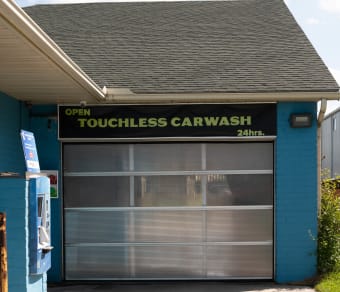
If you've ever driven through Niagara Falls in winter, you know the drill. The roads get covered in that grimy, grey slush that sticks to everything. It looks harmless enough, but here's the thing: that innocent-looking mess is basically coating your car in a slow-acting chemical that's eating away at it, piece by piece.
The Problem with Road Salt
Look, road salt does its job. It melts ice, keeps us safe, and makes winter driving possible. But the same chemical reaction that melts ice on the road also attacks the metal on your car. Once salt gets onto your vehicle, it starts breaking down the protective layers that are supposed to keep rust away.
And it's sneaky about it. The parts that take the worst beating? Your undercarriage, wheel wells, exhaust system, and brake lines. Basically everything you can't easily see when you're walking around your car in the driveway.
Out of Sight, Out of Mind (Until It's Too Late)
Here's where most people get caught. You wash your car, it looks clean, and you figure you're good to go. But salt doesn't care about how shiny your hood is. It's hiding underneath, tucked into every crevice and seam where water and road spray get kicked up while you drive.
That's where the real damage happens. Salt mixed with moisture creates the perfect recipe for rust. Once rust starts, it doesn't stop on its own. It spreads, weakens metal, and eventually causes serious structural and safety issues.
What It Actually Costs You
Let's talk money. Ignoring salt buildup isn't just bad for your car's appearance. It hits your wallet hard. Corroded brake lines need replacing. Exhaust systems fail. Frame damage can make your car unsafe to drive. And when it comes time to sell or trade in? Rust is a huge red flag. Buyers see it and immediately think the car wasn't taken care of. Your resale value drops, sometimes by thousands of dollars.
All because of something that could've been prevented with a simple wash routine.
The Fix Is Easier Than You Think
Good news: you don't need to be a car expert to prevent salt damage. You just need to wash your car regularly during winter, especially after big snowstorms or when the temperature goes above freezing and everything starts melting.
The key is getting the undercarriage. That's where salt loves to hide and do its damage. A quick exterior wash won't cut it if you're serious about protecting your investment.
Now, if you like getting hands-on with your car, a DIY wash gives you full control. You know your vehicle better than anyone, and you can really focus on those problem spots: the wheel wells, behind the bumpers, all those tight areas where salt loves to camp out. There's something satisfying about taking care of your car yourself, knowing it's done right because you did it.
But let's be real. Winter in Niagara isn't exactly pleasant car-washing weather. If you'd rather stay warm and still get professional-level results, a touchless wash is your best bet. It gets into those hard-to-reach areas without risking scratches from brushes or mitts, and it's specifically designed to blast away salt and grime safely.
Don't Wait Until Spring
Niagara's winter roads aren't going anywhere. But the damage they cause? That's 100% preventable. Make washing your car part of your winter routine, not just when it looks dirty, but especially after salt exposure. You'll save yourself hundreds, maybe even thousands, in repairs down the road. Plus, your car will last longer and hold its value better when it's time to sell.
Winter doesn't have to mean sacrificing your car's condition. A little prevention now goes a long way.
Fight back against salt this winter. Keep your car clean and protected at Classic Car Wash & Storage, 375 Franklin Blvd. in Cambridge.
